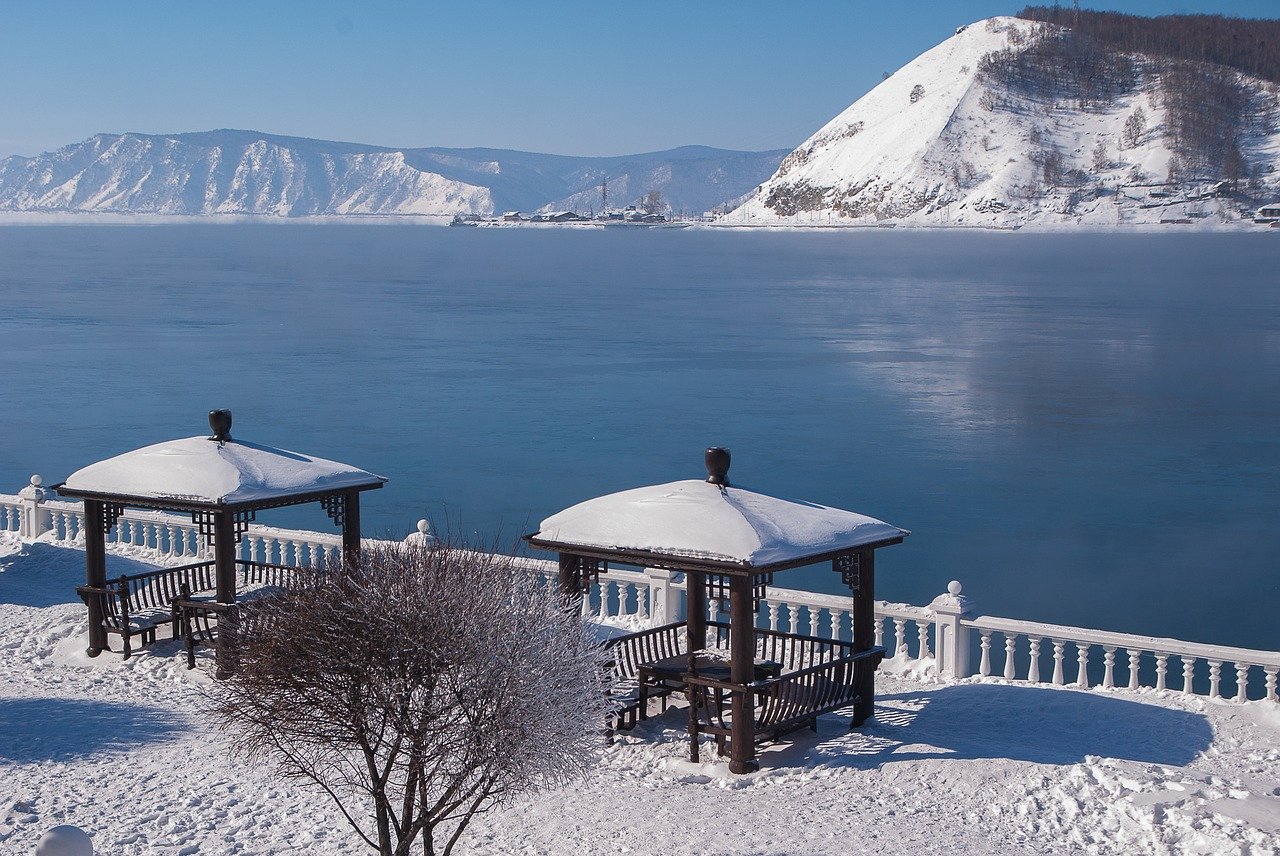
Lake Baikal Facts
Lake Baikal, in eastern Siberia, is no ordinary lake. Here are some interesting facts about it:
Lake Baikal Depth and Size
The surface area of the lake is 31.7 thousand km2, it is the seventh largest lake in the world after Caspian Sea, Lake Victoria, Lake Taganyika, Lake Huron, Lake Michigan and Lake Superior. It has almost the same surface area as Belgium or Netherlands.
The lake is 636 km long, being the widest in the center, 81 km, and the narrowest near the near the Serenga delta, 27 km.
Lake Baikal Max Depth and Average Depth
The average depth of Baikal is 744.4 m higher than the maximum depths of many lakes in the world.
Its maximum depth, measured by russian scientists Kolotilo and Sulimov in 1983, was 1640 m, which made Baikal the deepest lake in the world.
Climate Facts
Because large bodies of water retain heat longer than land, the climate around Lake Baikal is much milder than in the rest of southern Siberia.
Even in the depths of winter the average air temperature is -6°F (-21°C), compared with minimum temperatures of -68°F (-90°C) elsewhere in Siberia.
In August, the average air temperature is 52°F (11°C).
The lake freezes over from January until May or June, but its surface temperature in August is between 50 and 54°F (10–12°C).
How deep is Lake Baikal & Other Facts
Baikal at a glance:
- Lake Baikal is the deepest lake in the world with a maximum depth of 1,632m
- It is also the world’s largest volume of fresh water 23,000 cubic km.
- This means that one-fifth of all the fresh water in the world is located here at Lake Baikal.
- Lake Baikal is 640km long and judging by its dimensions only it would be more of a sea than a lake.
- Baikal is also the world’s most ancient freshwater lake, it originated 20-25 million years ago.
- It is home to many unique species of animals and plants including the freshwater seal.
- Lake Baikal is one of the clearest and purest bodies of water. In a good day you could see 40 meters into the lake.
- Dimensions of Lake Baikal: It is 636 km long, 79 km wide.
- There are 27 islands in Lake Baikal, most of them being uninhabited.
- Baikal Lake’s coastline measures 2100 kilometers (around 1300 miles).
- More than 300 streams and rivers flow into Lake Baikal, but there is just one outlet, the Angara.
- The water in the lake creates a mild microclimate around its shores.
- More than half the species found in Lake Baikal are unique to this place.